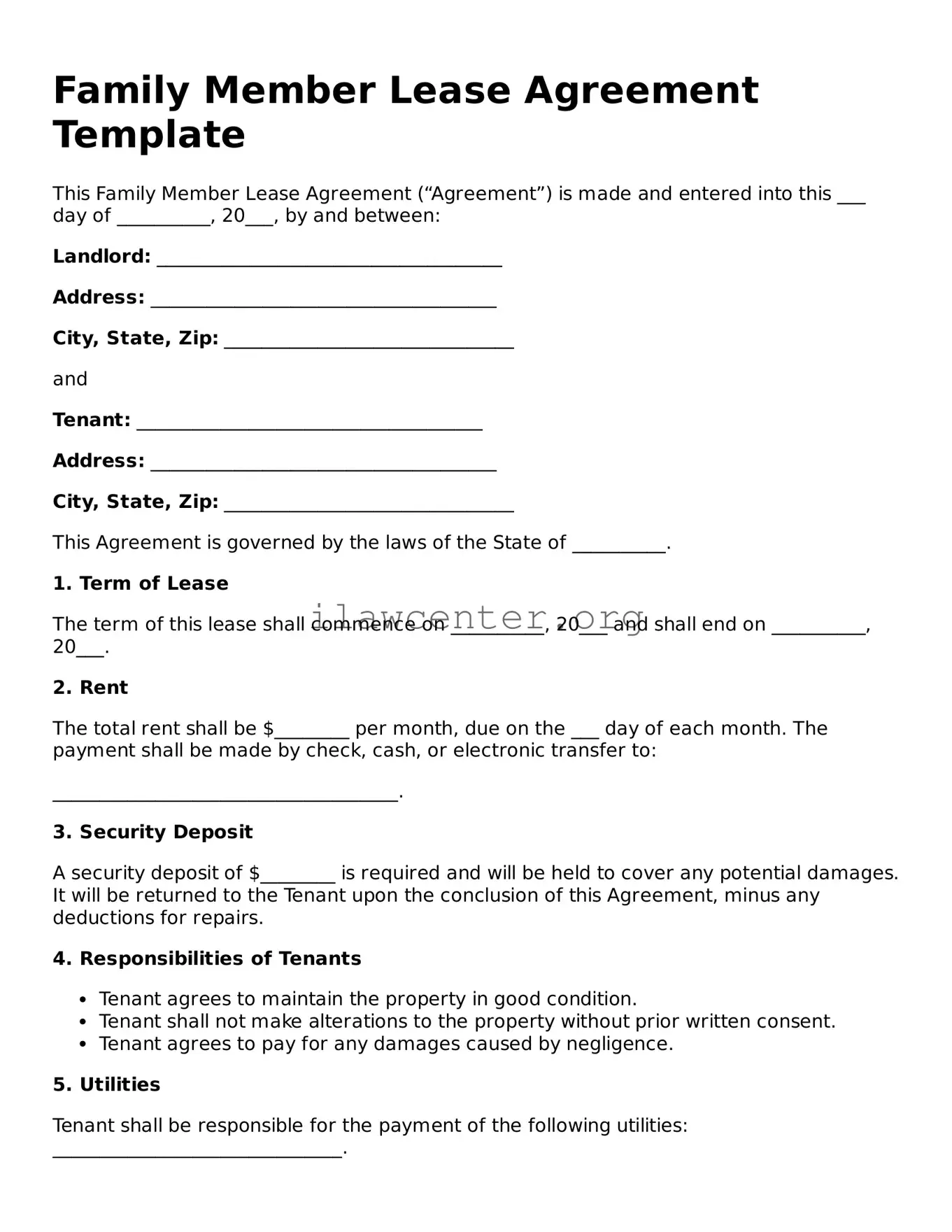What is a Family Member Lease Agreement?
A Family Member Lease Agreement is a written contract between a property owner and a family member who will be renting a portion of the property. This agreement outlines the rights and responsibilities of both parties, ensuring clarity and protecting their interests. It's essential for defining rental terms and expectations while maintaining a positive family relationship.
Why should I use a Family Member Lease Agreement?
Even when renting to a family member, it's important to have formal documentation. A Family Member Lease Agreement can prevent misunderstandings and disputes over rent, repairs, and other responsibilities. It helps clarify terms, such as payment amounts, due dates, and the duration of the lease, thereby fostering transparency in the arrangement.
What key terms should be included in the agreement?
Essential terms include the names of both parties, the rental amount, payment schedule, length of the lease, and details about security deposits. It's also wise to address maintenance responsibilities, pet policies, and conditions for terminating the agreement. By laying out these terms clearly, both parties can avoid future conflicts.
Can I charge my family member above-market rent?
While you can set your rent based on various factors, charging above-market rent to a family member is generally frowned upon. Consider your relationship and the nature of the arrangement. Fair rental prices help maintain good family ties, while excessive charges might lead to resentment.
What if my family member doesn't pay rent?
If a family member fails to pay rent, the situation can be sensitive. Communicate openly about the issue first; often, a simple conversation can resolve misunderstandings. If necessary, refer to the lease agreement to outline consequences for nonpayment, which might include late fees or eviction procedures if agreed upon during the contract negotiations.
Do I need to file the Family Member Lease Agreement with any authorities?
Typically, a Family Member Lease Agreement does not need to be filed with local authorities, as it is a private contract between the parties involved. However, some jurisdictions may have specific requirements for rental agreements, so it's always a good idea to check local laws. In some cases, notarization may add an extra layer of verification and trust.
Can we modify the agreement after it has been signed?
Yes, modifications to the Family Member Lease Agreement can be made after it is signed, but both parties must agree to the changes. Document any modifications in writing, and have both parties sign the amended agreement. This practice helps protect both sides and ensures clarity going forward.
